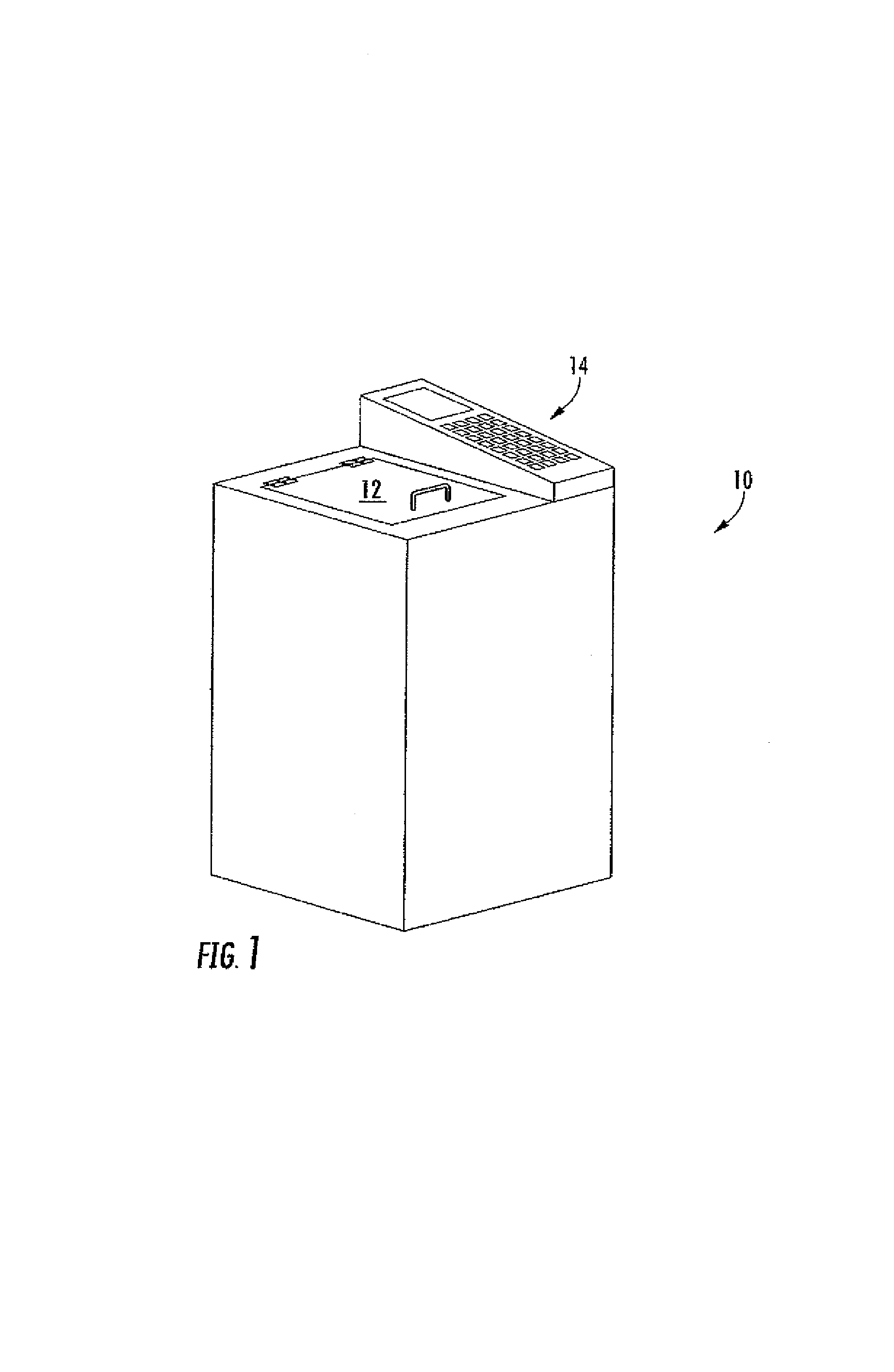Rapid tissue processing method and apparatus
a tissue and tissue technology, applied in the field of tissue processing, can solve the problems of insufficient impregnation, potential misdiagnosis, adverse impact, etc., and achieve the effects of rapid tissue processing, rapid tissue processing, and easy resistance to electricity flow
- Summary
- Abstract
- Description
- Claims
- Application Information
AI Technical Summary
Benefits of technology
Problems solved by technology
Method used
Image
Examples
Embodiment Construction
[0036]The present invention is a method for the rapid processing of a tissue sample. The steps of fixation, dehydration, clearing, and impregnation (sometimes herein referred to as infiltration) can be rapidly performed in a period of time ranging from about ten minutes to about two hours, based on the tissue type and size, and, further, depending on the selected processing protocol. FIG. 1 shows the tissue processing unit 10 having a control panel 14 and a loading door 12. The processing unit 10 can be of any size and shape so long as it contains all relevant components to process the tissue sample. The loading door 12 can be of any type so long as it provides access to the processing chamber 13. The control panel 14 comprises various controls for adjusting the temperature, run time, run cycle, and the like. Preferably, the control panel 14 also comprises a screen for displaying a variety of information, such as the temperature of processing solution inside the chamber 13 and the t...
PUM
| Property | Measurement | Unit |
|---|---|---|
| frequency | aaaaa | aaaaa |
| frequency | aaaaa | aaaaa |
| voltage | aaaaa | aaaaa |
Abstract
Description
Claims
Application Information
 Login to View More
Login to View More - R&D
- Intellectual Property
- Life Sciences
- Materials
- Tech Scout
- Unparalleled Data Quality
- Higher Quality Content
- 60% Fewer Hallucinations
Browse by: Latest US Patents, China's latest patents, Technical Efficacy Thesaurus, Application Domain, Technology Topic, Popular Technical Reports.
© 2025 PatSnap. All rights reserved.Legal|Privacy policy|Modern Slavery Act Transparency Statement|Sitemap|About US| Contact US: help@patsnap.com



